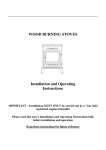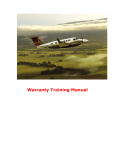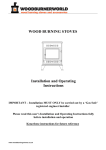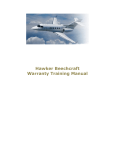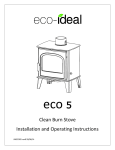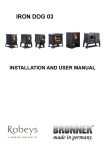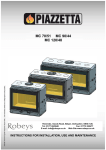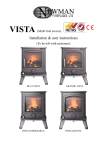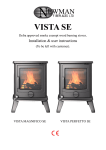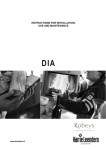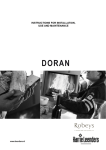Download OPERATING INSTRUCTIONS FOR UK CLIENTS
Transcript
SECOND GENERATION THERMOVENT CONVECTOR FIRE OPERATING INSTRUCTIONS FOR UK CLIENTS READ THE THESE INSRUCTIONS CAREFULLY BEFORE USING THE FIRE. IF YOU HAVE ANY QUESTIONS REGARDING YOUR THERMOVENT FIRE CALL 01905 820181 OR EMAIL [email protected] Copyright Camelot Real fires 2011 Document No.15 Issue date: 21 Sept 2011 Issue No 4 Operating Instructions THERMOVENT CONVECTOR FIRE WARNING NOTE IMPORTANT NOTES Properly installed, operated and maintained this stove will not emit fumes into the dwelling. Occasional fumes from de-ashing and re-fuelling may occur. However, persistent fume emission is potentially dangerous and must not be tolerated. If fume emission does persist, then the following immediate action should be taken:- CO Alarms Your installer should have fitted a CO alarm in the same room as the appliance. If the alarm sounds unexpectedly, follow the instructions given under “Warning Note” above. (a) Open doors and windows to ventilate the room and then leave the premises. (b) Let the fire go out. (c) Check for flue or chimney blockage and clean if required (d) Do not attempt to relight the fire until the cause of the fume emission has been identified and corrected. If necessary seek expert advice. The most common cause of fume emission is flueway or chimney blockage. For your own safety these must be kept clean at all times. If the fire is left unattended when lit then a spark guard should be placed in front of the open fire. A spark guard manufactured to BS 3248 specification should be used. Page | 1 General Before lighting the fire check with the installer that the installation work and commissioning checks described in the installation instructions have been carried out correctly and that the chimney has been swept clean, is sound and free from any obstructions. As part of the fires’ commissioning and handover the installer should have tested the fire and shown you how to operate the fire correctly. The appliance is capable of intermittent operation Use of fireguard When using the fire in situations where children, aged and/or infirm persons are present a fireguard must be used to prevent accidental contact with the fire. The fireguard should be manufactured in accordance with BS 8423. Operating Instructions THERMOVENT CONVECTOR FIRE Chimney cleaning To sweep the chimney ensure the left and right hand flue baffle plates are removed by reaching up into the flue on the left and right and taking them out. Move the flue baffle control to the OPEN position on the far right. The chimney should be swept at least once a year. It is important that the flue connection and chimney are swept prior to lighting after a prolonged period of not using the fire. In situations where it is not possible to sweep through the fire the installer will have provided alternative means, such as a soot door. After sweeping the chimney, the fire flue outlet and the flue pipe connecting the fire to the chimney must be cleaned with a flue brush. Should the brush stick in the flue gather turn the brush anti-clockwise. This will allow the bristles to pass by the gather and the baffle. Repeat this process to remove the brush. Replace both flue baffle plates either side of the flue openings. Extractor fan NO extractor fan should be fitted in the same room as the fire as this can cause Page | 2 the fire to emit smoke and fumes into the room. Aerosol sprays Do not use an aerosol spray on or near the fire when it is alight. Use of operating tools Always use the operating tools / gloves provided when handling parts likely to be hot when the fire is in use. Chimney Fires If the chimney is thoroughly and regularly swept, chimney fires should not occur. However, if a chimney fire does occur close the flue baffle fully, rake out the fire and allow it to go out. The chimney and flueways should then be cleaned. If the chimney fire does not go out when the above action is taken then the fire brigade should be called immediately. After a chimney fire the chimney should be carefully examined for any damage. Expert advice should be sought if necessary. Permanent air vent The fire requires a permanent and adequate air supply in Operating Instructions THERMOVENT CONVECTOR FIRE order for it to operate safely and efficiently. In accordance with current Building Regulations the installer may have fitted a permanent air supply vent into the room in which the fire is installed to provide combustion air. This air vent should not under any circumstances be shut off or sealed. It is important that furnishings and other combustible materials are not placed too close to the front of the fire. The safe distances for combustible materials to the rear and side of the appliance are 500 mm and 400 mm respectively All local regulations, including those referring to national and European standards have been complied with when installing the appliance USER OPERATING INSTRUCTIONS Please note that HETAS Approval only covers the use of wood on the fire and approval does not cover the use of other fuels either alone or mixed with wood, nor does it cover instructions for the use of other fuels. Page | 3 The appliance should not be used as an incinerator or used to burn liquid fuels Air control The air control on your Thermovent is situated in the centre of the bottom front edge of the fire. To vary the control slide the bar to the right to open (more air) or the left to close (less air). The bar will get hot during operation so use gloves or the poker tool supplied with the fire to move the control. The bar is marked C for CLOSED and O for OPEN. Having an air control is a requirement to meet European standards your Thermovent fire has achieved. In practice, as the face of the fire is open to the room, the effect of the air control on the fire is much less than on a wood stove (with doors on the open face) where the air control is the main means to control the fire. For maximum efficiency and output on your Second Generation Operating Instructions THERMOVENT CONVECTOR FIRE Thermovent fire the air control should be in the fully open position (to the right) The bar will get hot during operation so use the glove supplied with your fire to move the control. Flue baffle control As your Second Generation Thermovent fire is an open fire rather than a wood burning stove, the flue baffle provides the main means to control the rate of burn on your fire plus the means to achieve maximum efficiency and output. Controlling your fire. The flue baffle control has 4 ‘knotched’ settings which you will be able to feel as you move it through its range but it can be set anywhere along its travel. To control the flue baffle look under the canopy in the area where the 4 heat exchange vents deliver hot moving air back into your room. You will see a bar pointing towards the floor. This is the control for the flue baffle. Along the edge where the bar locates against the body of the fire you will see cut out labels: Closed Page | 4 Max Mid Open The flue baffle will allow you to vary the rate of burn of the fire. To control the rate of burn move the lever to the left towards MAX. To increase the rate of burn move the lever to the right towards OPEN. DO NOT USE THE FIRE WITH THE FLUE BAFFLE IN THE CLOSED POSITION. THIS WILL CAUSE THE FIRE TO SMOKE AND DANGEROUS GASES ENTER THE ROOM. The baffle has been calibrated so that open is fully open, but CLOSED DOES NOT TOTALLY CLOSE OFF THE FLUE. A minimum of 15% of the flue area is always open. This is as regulation safety feature of the fires design. Operating Instructions THERMOVENT CONVECTOR FIRE Warning: When using the flue control you must be aware of the potential for smoke to spill into the room if you close off the flue too much in relation to the fire. To close the flue control to ‘max’ you need a good roaring fire with good long flames. If you are running a smaller fire you may not be able to use the ‘Max’ position. Small IRREGULAR amounts of smoke spilling into the room doesn’t neccasarily mean your fire has a problem – particularly during reloading or stoking the fire or on blustery days. If you have any concerns or suspect smoke or gasses are entering the room or if you are leaving the room for any duration, open the flue control (and don’t forget to use your fire guard). If the smell is strong or you are still concerned, open external windows and doors to clear the air in the room and let the fire go out then seek Page | 5 professional advice before re-lighting the fire. More wood, more heat. The most obvious way to control your open fire is to vary how much wood you put on it. Less wood equals less heat but you may suffer reduced efficiency running your fire this way. Quality, seasoned wood Using quality seasoned wood will increase your enjoyment when using your fire and the heat and efficiencies you achieve. Good wood is the lifeblood of a fire. You can source wood from local suppliers or there are a number of national suppliers including Certainly Wood (www.certainlywood.co.uk). Log size Big logs (long and thick) are harder to handle and create less opportunities for air gaps within the fire itself. As such, in an open fire, they often burn less well. We suggest using well seasoned quality logs that have been split into quarter or half down their length and are approximately 200mm – 250mm long. Operating Instructions THERMOVENT CONVECTOR FIRE Getting Maximum output or performance. room and do not close the flue beyond this point. Your Second Generation Camelot Thermovent fire has been lab tested to establish where its best performance lies and calibrate its controls. Lighting your fire Over time you’ll develop your own knack of lighting your fire which is all part of the fun, but below are a few pointers to get you going: To achieve the best efficiency and output build a good fire with 5 or 6 pieces of split log burning in a wig wam like formation leaning against the back face of the fire on a good bed of red embers. The air control should be in the open position. Once the logs have taken and are burning well move the flue baffle control to the MAX position.This will achieve the best peformance. IMPORTANT Note: If your chimney has suffered poor performance in the past, closing the flue control in this way may cause the fire to smoke. Also the position may vary depending upon the size of fire you have built. Experiment with your fire in your chimney at what point there is no smoke entering the Page | 6 Place some firelighters or paper and dry kindling wood on the bed of the fire and cover with a small amount of fuel in a wigwam formation against the back face of the fire. We would suggest you allow ash to build up to within 1 inch of the top of the lower front plate as a bed for the fire. Set the flue control and air control to OPEN and set light to firelighters or paper. Building a good fire: Allow the fire to burn until the wood is well alight then load with more fuel to create a wigwam style structure against the back face of your Thermovent fire and adjust flue controls to the required rate of burn. Refuel or let the fire die down? If you want your fire to continue at this level of performance re-load with a similar amount of logs Operating Instructions THERMOVENT CONVECTOR FIRE whilst still retaining a wig wam structure. Be sure to refuel before the fire burns down to just embers or output will drop whilst the fire rebuilds. Note: Nominal re-fuelling intervals based on 3rd party efficiency test results are 30 mins for a load of 5-6 quality, well seasoned logs with a moisture content of 15-20%. Do not allow fuel to spill over the top of or through the front fire grate. If you are letting the fire die down, move the flue baffle control to the OPEN position. This is particularly true at the end of a night infront of the fire. (and don’t forget to use your fire guard!). Stoking the fire Unlike a wood stove, an open fire needs to be built as described (wigwam shape) to let more air between the logs for it to burn well. As the wood burns it changes shape and thus the fires behaviour changes. You stoking the fire with a poker improves the fires ability to burn down logs fully but also make the fire ready for the next load of logs. Page | 7 Don’t worry too much about this – experiment with your techniques and have fun. The main thing is to avoid dismantling the heart of the fire where the logs meet and the main heat is. Ash clearance Ash in the base of the fire can be tidied up regularly but ensure the air control does not become blocked with spilled ash. Use a small shovel and brush to remove surplus ash around the fire. In addition ensure ash does not build up in front of the aperture at the base of the fire. This is the inlet for the heat exchangers at the back and top of the fire. If blocked they will be unable to draw in and heat room temperature air. Sweep away and clear ash in this area regularly. If removal of hot ash is to be undertaken then the use of a special ash carrier is recommended. This may be purchased from a local hardware store or fire specialist. Care should be taken to ensure that any hot ash is cool before emptying it into plastic bins or liners. Operating Instructions THERMOVENT CONVECTOR FIRE Flueway cleaning It is important that the baffle plate and all the fire flueways are kept clean. When burning wood they should be cleaned at least once a week, and more frequently if necessary. your Camelot Second Generation Thermovent fire please call 01905 820181 or email [email protected] with details of the parts required or your query. Remove any sooty deposits from the baffle plate until they fall off into the fire. The only items that will require periodic replacement are the Vermiculite board liners on the inside of each side of the fire and across the lower part of the base. More soot will be deposited on the baffle plate and in the flueways if the fire is run at low levels for long periods. If this is the case then more frequent cleaning will be necessary. The appliance is not suitable for installation in a shared flue system Maintenance It is advisable that the appliance is maintained regularly by a competent engineer There should be no unauthorised modification of the appliance If any parts need replacing then they should only be those recommended by the manufacturer. Parts Should any new parts be required for Page | 8 Cleaning The main fire, grate and dog irons them self requires nothing more than a regular light brush with graphite paste. Steel canopies simply require gentle clean with a clean cloth and rebrushing with the same brush used to brush up the graphite on the grate/dog irons (but don’t add more graphite paste or marks will appear). Copper and brass canopies can be brought back as new with Brasso (or similar) and a clean cloth. Take an area of no more than 500mm square at a time and apply Brasso. Once dry remove the cream with a second cloth and the finish will be restored. Operating Instructions THERMOVENT CONVECTOR FIRE TROUBLE SHOOTING We want our customers to enjoy a lifetime of open fires with our products. If you have any issues do not hesitate to contact us on 01905 820181. Whilst we are not experts in chimney repairs or construction issues we may well know someone who can help or provide advice on your situation. Fire won’t draw: If the fire won’t draw ensure the flue control is set to open. Also check for obstructions in the flue / chimney – when was the chimney last swept? A build up of soot will reduce the draw on the chimney. On damp or cold nights you may suffer from a pocket of static, cold air in the chimney when trying to light the fire – particularly if your chimney is built on the outside of your house. If you can get this air warm and moving the fire will draw. (we do not recommend using a lit piece of paper as pieces can float up the chimney and cause chimney fires). No heat in the fire: If you find poor heat is coming from the fire check you are using split logs rather than just large whole logs. Split logs Page | 9 increase the air inlets within the fire and improve the burn and thus heat. Another cause can be the use of unseasoned wood which will have a higher moisture content. Effectively the heat of you fire is being used to burn off this moisture before you get the benefit of the heat that’s left. If the fire is burning well, check that the gap along the front bottom edge of the fire has not become clogged with ash. If it has the heat exchange system will be unable to draw room temperature air into the heat exchange system and the output of the fire will be reduced. Constantly smokes: Check for obstructions in the flue or chimney. Has the flue baffle been left closed during lighting? If the situation persists open windows / doors to the outside and let the fire out then seek advice from an expert or call ourselves on 01905 820181. Fire puffs out smoke intermittently: Many chimneys with open fires will puff smoke occasionally – especially during stoking or re-fueling. Moving the flue control baffle to the OPEN position will reduce the possibility of puffing. Operating Instructions THERMOVENT CONVECTOR FIRE On blustery days, if you have trees or a bank near your chimney top at a high level, the swirl of the wind can create downward pressure on your chimney periodically and hence puffing in the room. If you believe this could be the case, contact an expert for advice re potential solutions or call ourselves on 01905 820181. Fire creates cold drafts: When lit your fire needs an air supply to burn the wood. When going well the amount of air it requires is not small. If your room has insufficient external air supply near the fire (typically an air brick) it will draw air under doors from other rooms – thus creating a cool draft. Can’t light the fire: Many people struggle lighting a fire in the early days. Firstly ensure the air control and the flue control are fully open. Ensure you are using dry paper that is not treated to prevent it burning (newspapers aren’t – many magazines are) or use a quality firelighter and don’t skimp – use 3 or 4 until you get the hang of it. Make sure you are using small kindling wood to get the fire Page | 10 going with small split logs to burn on the kindling. If you just throw the wood on top of the kindling your reducing the chance of the fire taking. Build the kindling and the smaller logs in a wigwam shape against the back face of the fire. Stains on the hearth / Canopy In the past most chimneys were built with a dog-leg in the flue to prevent rain falling directly down it. In addition chimneys were lined with bricks or a kind of mortar which was not smooth and absorbed water. Today many flues are built, or re-lined, with red clay pots or steel. This is smooth and does not absorb water. All this means rainwater can travel down your chimney more quickly. When it reaches the fire it will have collected colour from the soot in the chimney. Flues & connectors are designed to seal in an downward direction so most water should stay inside the chimney / fire, but it is possible a small amount could leak out and may leave small stains on your hearth. Operating Instructions THERMOVENT CONVECTOR FIRE Cowels on chimneys can fix this but take care not to create a smoking chimney in the process. Blue oily smoke when first installed: Your Thermovent fire has been created using mild steel. When supplied this is coated with oil. At the end of the assembly process the fire is dipped to remove the grease and painted with heat resistant paint. In the event a small amount of oil remains, on first lighting the fire after installation, you may see a blue smoke exiting the heat exchange vents. This will burn off in a short time and does not mean there is anything wrong with your Thermovent fire. Technical Specification (3rd party testing to BS EN 13229) Test fuel Nominal heat output, kW Efficiency,% CO emissions @ 13% O2 Flue gas mass flow, g/s Flue temperature, °C Beech wood logs 14.1 51.6 0.26 57.1 228 Safety distances from combustible materials Rear, mm 500 Side, mm 400 The appliance has been tested for intermittent burning Page | 11 Operating Instructions THERMOVENT CONVECTOR FIRE Notes: Camelot Real Fires is a trading name of Hunt & Gather Sales + Marketing Ltd Hatfield Bank Norton Worcestershire WR5 2PZ Registered in England No. 6705070 Tel 01905 820181 [email protected] www.camelotrealfires.co.uk













